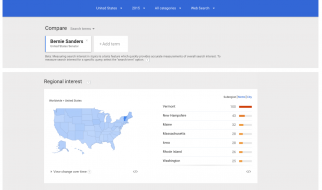
As I continued to research into what happened to companies I vaguely remember from my childhood I thought of an old department store my mom used to take us to called Caldor. Since this one is a little less famous than TWA, I?ll start with a brief history of Caldor, talk about its decline and cover what led to its bankruptcy
Caldor?s History
Established in 1951, Caldor was a combination of the names of its two founders, Carl and Dorothy Bennett. Caldor focused on a few differentiating factors, including specializing in name-brand goods, and in its early days positioned itself a more of a way of life brand with it?s long standing slogan ?Where Shopping is Always a Pleasure.?
Carl Bennet described their customers as such in a 1980, article in the N.Y. times: ?middle to upper income, a customer who wants better-quality merchandise and appreciates showing in a pleasant atmosphere with knowledgeable, trained personnel.?
In 1958 Caldor expanded to a second location, and by 1961 it had grown to four locations and went public as Caldor Inc with Carl Bennett serving as President, Director, and Chairman of the Board, and Dorothy as Treasurer and Director.
In 1966 Caldor opened their ninth store and continued to expand in the five-state area of New York, Connecticut, Massachusetts, Rhode Island and New Hampshire. In 1976 Caldor acquired seven stores formally run by a competitor, W.T. Grant, adding to their rapid growth throughout the 70s. They closed out the decade with 56 stores, and its sales would top $550 million, moreover even through the recession of the 70s its earnings grew at 20.7% between 1969 and 1979.
The decline
Caldor proved too tempting a company to avoid being picked up during the merger and acquisition craze of the 80s, and in 1981 it was purchased for $313 million by Associated Dry Goods Corporation who was looking to expand into the discount retailer business.
In 1985 Carl Bennett retired from Caldor, which had grown to 100 stores and 1 billion dollars in sales. Almost immediately, things start to get shaky for Caldor. In 1986 Associated Dry Goods itself was bought out by May Department Stores for $2.2 billion, which was at the time it was the most expensive retail merger in history.
 Caldor Ad from 1980
Caldor Ad from 1980
Immediately May began cost-cutting and divesting from Associated Dry Goods brands. In October of 1989, the investment group Odyssey Partners purchased Caldor for $500 million in cash and the assumption of $52 million in debt and lease obligations. In 1991 Odyssey Partners took Caldor public again reducing their debt load and allowing Caldor to continue to expand, purchasing six department stores from the failed Alexander?s in 1992. That buyout included Alexander?s flagship store in the Bronx at Fordham Road and Grand Concourse which is the Caldor?s of my memory. By mid-90s Caldor had become the 4th biggest department store in the nation.
 Fordham Road and Grand Concourse Source: http://forgotten-ny.com/2017/03/caldor-fordham-1999/
Fordham Road and Grand Concourse Source: http://forgotten-ny.com/2017/03/caldor-fordham-1999/
Sadly that was the last of the good news for Caldor. In September of 1995 the company filed for Chapter 11 bankruptcy, it?s stock had fallen from $32.37 at the start of the year to $3.75 at the time of its bankruptcy. It still made a profit of $3.3 million in the second quarter of 1995 that was a 60% reduction from 1994. When it entered bankruptcy protection, Caldor had $883 million in liabilities to $1.2 billion in assets.
How can a company collapse so quickly? Caldor cited two primary problems in 1995: first, competition from financially weakened rivals that used deep discounts to try and drive sales, this was particularly acute with the failure of Bradlees who went bankrupt in June of 1995. The second, and in the long term more fatal challenge was the growth of national chains, notably Kmart and Walmart moving into the region, challenging regional brands such as Caldor.
In a 1995 Washington Post article Caldor?s Chairman explained it as such: ? ?We have been confronted with a very difficult retail environment, characterized by fierce competition, weak sales and exacerbated by other discount retailer bankruptcies. This has substantially affected business conditions.?
In 1997 Caldor closed my local store as it continued to struggle to leave bankruptcy and by the end of 1997 was down to 157 stores in 10 states. Finally, in 1999, Caldor threw in the towel and filed for Chapter 7 bankruptcy and began the process of liquidation. By this point, they were down to 145 stores in 9 states.
Once the decision had been made to liquidate the company moved quickly, and by April 1999 most of the locations were closed, and on May 15, 1999, the last Caldor store shut down. The Caldor Corporation itself continued to exist until December of 2001 to wrap up legal issues after which the company closed its doors for good.
So what ultimately did bring Caldor down? Caldor was swept up in the same forces that were affecting the greater American economy at the time: the rise of national competitors. Walmart embodied this change; their sheer size allowed them to compete on price and scale in a way that regional competitors such as a Caldor just could not. For context in 1995, the year Caldor entered bankruptcy Walmart had almost 3,000 stores to Caldor?s 166 and had $96.3 billion in sales, compared to Caldor?s peak sales of $2.75 billion. Additionally, per square foot, Caldor was making half as much as Walmart. There was just no way for Caldor to compete in any price war while being so outmatched.
At a deeper level, Caldor shows the business risk of courting price-sensitive customers as they rarely develop loyalty to a brand and will follow the lowest prices, a strategy Walmart perfected to the dismay of thousands of other retailers. Unlike with TWA, there were no sob stories in the newspaper when Caldor closed, even though it cost the region 22,000 jobs. The New York Times ran an article in 1999 headlined ? New Jersey; As Caldor Fades, Retail Market Is Unfazed? talking about how little it mattered that Caldor was going bankrupt. Even the local news focused on who was going to replace Caldor rather than any sadness of Caldor closing.

Another 1999 New York Times article quoted a customer saying ???It?s a pretty good store, very reasonable prices, fairly good quality, and you can get very good buys at the sales. Working people shop here,?? she said. ??Where will they go now???
The answer it turned out was Walmart.


